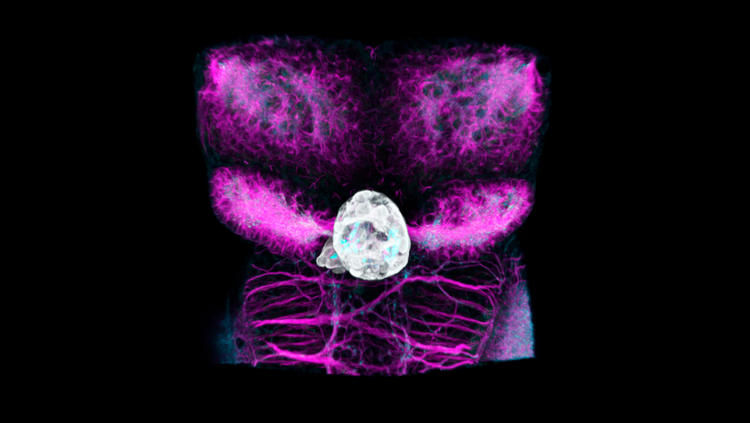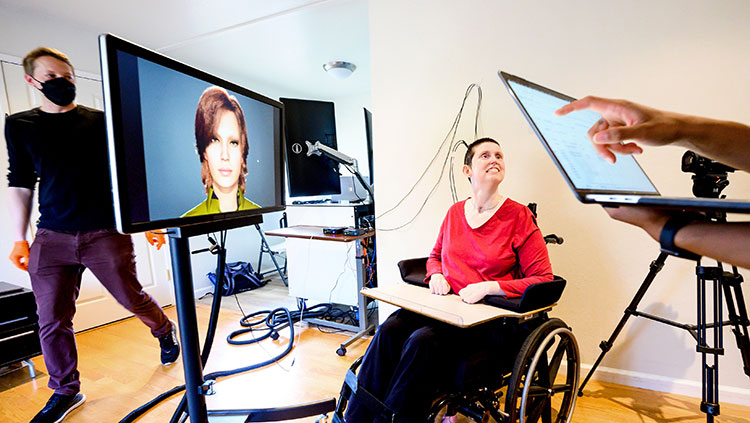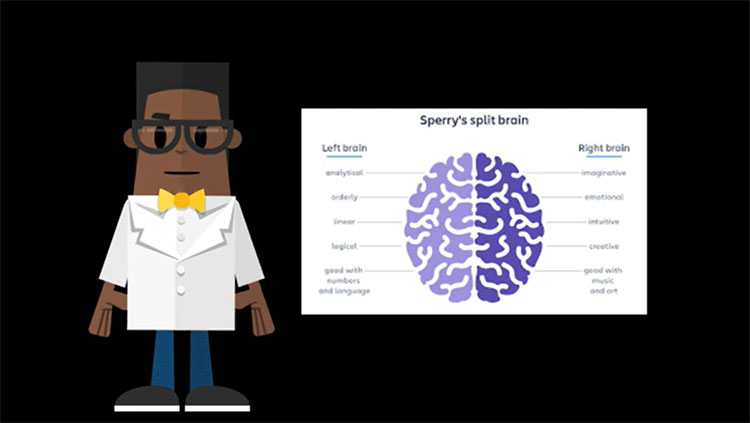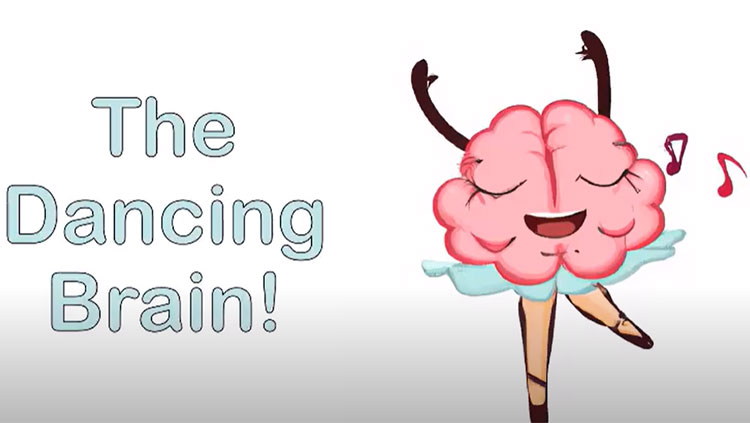Summoning the Sandman
- Published28 May 2019
- Author Charlie Wood
- Source BrainFacts/SfN

Groggy? This gray globule may shoulder some blame. Seen here in a zebrafish, the pineal gland — which takes its name and pronunciation from its pinecone-like shape — lives deep in the brain and helps the body tell day from night.
When the sun goes down, the gland floods your system with melatonin, also known as “the vampire hormone ” for its nocturnal schedule. Peaking after midnight and melting away around eight AM, this chemical doesn’t necessarily put you to sleep itself, but it does inform other parts of the brain that it’s time to wrap things up for the day.
Or that’s how the pattern is supposed to go. But light from screens, like cell phones, TVs, and tablets, can trick the pineal gland into thinking it’s still daytime at night, delaying the release of melatonin. Compared with those who read paper books before bed, tablet users tend to fall asleep later, dream less, wake later, and feel sleepier the following morning.
CONTENT PROVIDED BY
BrainFacts/SfN
References
Sapède, D., & Cau, E. (2013). Chapter Five - The Pineal Gland from Development to Function. In P. Thomas (Ed.), Current Topics in Developmental Biology (Vol. 106, pp. 171–215). doi: 10.1016/B978-0-12-416021-7.00005-5
Walker, Matthew P. Why We Sleep: Unlocking the Power of Sleep and Dreams. Scribner, an Imprint of Simon & Schuster, Inc., 2018.
Also In Anatomy
Trending
Popular articles on BrainFacts.org


















